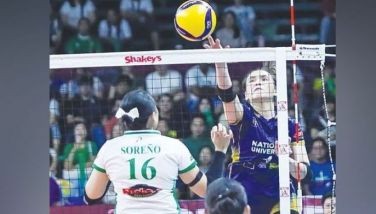BOTONG: The visual maestro from Angono
Art to live must go back to a bigger audience. For this it must have the power to communicate and not to repel. That is why I love to paint big murals, for like a composer I can create a symphony from the history of our country or our own way of life.
— From a letter by Botong Francisco to daughter Carmen, March 5, 1968
As part of National Artist Carlos “Botong†V. Francisco’s birth centennial celebration, Ayala Museum in Makati City is mounting the exhibition Botong Francisco: A Nation Imagined, his works from private and institutional collections.
An important part of Botong’s body of work is the large-scale paintings and public murals in several government buildings and important collections.
To be able to include these works that are not physically possible to display at the museum, an original short film by acclaimed director Peque Gallaga was produced and is on view at the exhibition.
Mariles Gustilo, senior director of Arts and Culture in Ayala Foundation, Inc., credits Botong for the “common wellspring of the images of our heroes, of our folk traditions and myths, and most of all, the splendor of our nation.â€
“An artist who chose to stay close to home, in his beloved Angono, rather than succumb to the lure of the big city to practice his art, Botong’s talent could not be contained in the geographical confines of his town,†says Gustilo.
Exhibition curator Ditas Samson cites, “Angono, his hometown, provided him with rich fertile ground to give character and root to his visual language.â€
It was in this lakeshore town that the artist grew up and, despite invitations elsewhere as his career flourished, chose to return again and again and eventually remain there as a full-time artist. He would tell another Angono artist, Vicente Reyes, that they need not go anywhere else. Everything they need is in Angono.
As a boy, Botong’s mind wandered while he would do sketches of his classmates clandestinely during classes.
As early as his first years in Angono Elementary School, word had already spread on his remarkable ability in illustration.
In college, Botong continued to draw attention at the University of the Philippines School of Fine Arts at Padre Faura in Manila. He found himself in the company of masters like Fernando Amorsolo and Guillermo Tolentino in the faculty.
When Botong dropped out a semester short of graduation (the reason he gave was that he could not afford the tuition; another possible reason was that he felt constrained by university life), Fabián de la Rosa, who was director of the School of Fine Arts, expressed his disappointment, but put out a good word on the talented young lad.
Victorio Edades, whose name years later would bear with it the titles “National Artist in the Visual Arts†and “Father of Philippine Modern Painting,â€would recruit Botong and contemporary Galo Ocampo as assistants to work on a series of public mural commissions from 1934 to 1935.
“Botong’s first major contributions to Philippine art had been created and designed as public art in government buildings, stately homes, and cinema houses, sites of congregation and community,†Samson points out.
During this time, he was also a member of the University of Santo Tomas School of Fine Arts faculty, where his technique was described as novel, but never forced.
“With his instruction on and introduction to modernism in tandem with his hometown heritage,†says Samson, “Botong was able to conjure a painted reality that connotes and conjoins the passages and passions of a lakeshore town and the pictorial vista of a nation and its history.â€
However, it was only a matter of time that Botong finally decided to retire and be a full-time artist in Angono.
On this, Samson details: “When Botong left the academic world to live the life of a full-time painter in Angono, the artist became chronicler and character of the hometown he had inhabited since birth. Angono was the matrix for several paintings, large-scale and intimate, of hometown and history. In contrast to the epic proportions of the public murals and popular cinema, Botong’s easel paintings depict intimate human gestures and quotidian still life images, characteristics that animate the beloved lakeshore and genre scenes: folk and families at work, eating, feasting, and praying. It is Botong’s community and world, several figures are actual people of Angono, come to life and now eternally part of the depicted quintessential small town beyond its borders.â€
When he was commissioned to paint a mural for the hall now known as the Bulwagang Villegas in Manila City Hall, the artist created Filipino Struggles through History, completed in 1964 and what some would argue to be his pièce de résistance.
Samson says, “All of the past artistic collaborations throughout the years and the nurture and nature of Angono that were assimilated by Botong had been infused into this outstanding mural.â€
Indeed, this 65 feet wide work of art highlights all of Botong’s endowments: faculty of overwhelming scale, ability for superb visual storytelling, and an undeniable sense of history and national pride.
Botong died of lung failure at the age of 57. He was awarded the highest recognition of National Artist posthumously in 1973, where his citation read: “No painter of his time was more closely attuned to the spirit of his land and people.â€
The exhibition gathers close to 50 paintings and drawings now on display in Botong Francisco: A Nation Imagined at the Ayala Museum Ground and Third Floor Galleries until March 31, 2013.
Filipino Struggles through History is one of the featured paintings in the exhibition film.
For more information, visit www.ayalamuseum.org.
- Latest
- Trending

















